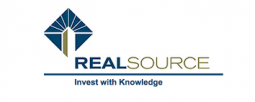Advantages of GP Stakes in Private Equity Firms: A Comparative Analysis of Dyal and its Benefits
Introduction
The private equity industry has witnessed a significant transformation in recent years, with the emergence of GP stakes as a prominent investment strategy. GP stakes refer to investments made by specialized firms in the general partners (GPs) of private equity funds. This essay explores the advantages of GP stakes in private equity firms, focusing on the case of Dyal, a leading player in this space. By analyzing the benefits and implications of GP stakes, this essay aims to shed light on the value that this investment strategy brings to both GPs and limited partners (LPs) within the private equity ecosystem.
1. Enhanced Alignment of Interests
One of the primary advantages of GP stakes is the enhanced alignment of interests between GPs and LPs. Traditionally, LPs invest in private equity funds, and their returns are dependent on the GPs' ability to generate profitable investments. With GP stakes, the investment firms gain a direct stake in the GPs themselves, fostering a closer alignment of objectives. By having a financial interest in the GPs' long-term success, these investment firms are more likely to actively support and collaborate with the GPs, driving greater alignment throughout the investment lifecycle.
2. Long-Term Partnership Stability
GP stakes provide a foundation for long-term partnership stability, benefiting both GPs and LPs. In the case of Dyal, their investment strategy involves taking minority stakes in established private equity firms. By injecting capital into these firms, Dyal helps stabilize the GP's ownership structure and allows them to plan for the long term. This stability offers several advantages, such as the ability to retain key talent, attract new talent, and maintain consistency in investment strategies. Ultimately, this stability enhances the overall performance of the private equity firm, which benefits both the GPs and their LPs.
3. Access to Operational Expertise :
In addition to capital injection, GP stakes also provide private equity firms with access to operational expertise. Investment firms like Dyal often have extensive experience and knowledge in the private equity space, which they can leverage to support their GP partners. This expertise can manifest in various ways, such as strategic guidance, operational improvement initiatives, and best practice sharing. By tapping into this wealth of knowledge, GPs can enhance their operational capabilities, improve portfolio company performance, and ultimately generate superior returns for their LPs.
4. Portfolio Diversification for Investors :
GP stakes offer LPs the opportunity to diversify their private equity portfolios beyond traditional fund investments. By investing in the GPs themselves, LPs gain exposure to a different type of risk and return profile. This diversification can be particularly valuable in mitigating risks associated with concentrated exposure to individual funds or strategies. Furthermore, GP stakes can provide LPs with access to a broader range of private equity investments that may not be accessible through traditional funds. This expanded universe of investment options can enhance portfolio construction and enable LPs to capture additional sources of alpha.
Conclusion :
In conclusion, GP stakes in private equity firms, exemplified by Dyal and its approach, offer several advantages to both GPs and LPs. Enhanced alignment of interests, long-term partnership stability, access to operational expertise, and portfolio diversification are among the key benefits of this investment strategy. By leveraging GP stakes, private equity firms can build stronger partnerships, drive operational excellence, and ultimately deliver superior returns to their investors. As the private equity landscape continues to evolve, GP stakes are likely to play an increasingly important role in shaping the industry's future.

_main.jpg)








